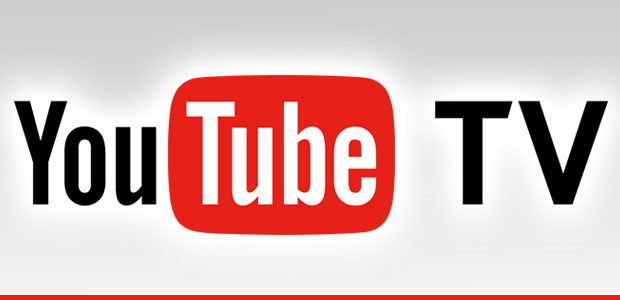YouTube TV will be rolling out to an additional 95 markets in the United States, almost doubling its coverage, YouTube announced Wednesday.
The streaming video service already covers the top 100 markets in the country, and the expansion will enable it to reach more than 98 percent of households in the U.S., YouTube said. The rest will follow shortly thereafter.
There are roughly 120 million TV households in the U.S., but only about 108 million households have broadband, which is a prerequisite for YouTube TV, noted Michael Goodman, research director at Strategy Analytics.
“Assuming it can reach 98 percent of broadband households, this means it’s available to 105.7 million households,” he told TechNewsWorld. “This doesn’t mean all these households subscribe to YouTube TV, but they can if they so choose.”
YouTube TV will have 1.73 million subscribers by the end of the year, Goodman estimated. It “will continue to be the fourth largest virtual multichannel video programming distributor (vMVPD) in the United States.”
What You Get for $40
YouTube TV offers access to more than 60 networks, including ABC, CBS, NBC, Fox, TNT, TBS, CNN, ESPN and FX, for US$40 a month.
It now provides local feeds from the four largest broadcasters in more than 90 percent of its markets.
Sports and premium networks available for an additional monthly fee include the following:
- AMC Premier — $5
- CuriosityStream — $3
- Fox Soccer Plus — $15
- Starz — $9
- NBA League Pass — $40 ($124 a year)
Showtime will be available for an extra $7 a month on specific devices.
Most of the programs offered by the service can be viewed on mobile devices, tablets, computers and TVs. YouTube TV currently supports Android L or later, and iOS 9.1 or later.
For TVs, subscribers can stream with Google Chromecast or download the YouTube TV app on Roku, Apple TV, Android TV, Xbox One, and supported Samsung and LG TVs.
NFL live streams can be viewed on subscribers’ computers and TVs using YouTube. They will not, however, be available on mobile devices.
Access to local networks will depend on the subscriber’s ZIP code.
Subscribers can cancel the service at any time with no penalty, but Google will retain their settings against their possible return.
Subscribers must sign in from home at least once every three months to keep their accounts active. They must sign in from home monthly in order to stream major league baseball content.
YouTube TV “appears to be pretty complete,” said Rob Enderle, principal analyst at the Enderle Group.
It’s “a strong alternative to large cable offerings for a fraction the cost,” he told TechNewsWorld.
That said, Google “has a bad reputation for mining users for their data, and this may prevent people from signing up — particularly if cable companies go on the advertising warpath, which is likely,” Enderle observed.
Using YouTube TV
YouTube TV membership comes with six accounts for each household, each with its own login and an unlimited personal DVR allowance. Members can run up to three streams simultaneously. Users must be at least 13 years old.
Account holders can stream their library wherever they go in the U.S. YouTube TV will keep each recording for nine months.
Subscribers cannot access any programs on YouTube TV, whether live or recorded, while traveling internationally.
The Ubiquity of Ads
Subscribers cannot fast-forward through ads while watching live TV or video-on-demand shows.
However, they can fast-forward through ads in these circumstances:
- If they have paused a streamed show, until they catch up to the live version of the program; or
- If they are watching a recorded program after it has aired on live TV.
The ads may not garner much revenue for YouTube.
“This is not like inserting ads on YouTube videos,” Goodman said, because the networks control the majority of the ad time.
“YouTube TV, like other pay-TV services and local stations, only get two or three minutes of ad time per half hour, out of about seven or eight minutes. So there continues to be a real challenge in making this service profitable,” he explained.
YouTube TV Pros and Cons
“From the consumer perspective, you get pretty much everything you want from a legacy pay-TV subscription, at somewhere around 25 to 50 percent less, depending on which vMVPD and level of service you choose,” Goodman said.
The lack of commitment is another plus, Goodman noted. However, “broadband subscriptions are more expensive, assuming you can even do so, so that mitigates the saving somewhat.”
In 2018, 24 million Americans still did not have broadband Internet access at home according to BroadbandNow.
Getting ads with a paid service is a minus point for Enderle, especially with the limitations on getting around viewing them.
Cord-Cutting Momentum
“Throughout the first three quarters of 2018, legacy pay-TV services were out 2.7 million subscribers,” Goodman said, adding that the total could reach 3.5 million when year-end 2018 figures are in.
“With the availability of Sling TV, DirecTV Now, Hulu Live TV, YouTube TV and others, consumers have real choice in the market, and the numbers show they like it,” he remarked. “It wasn’t until the vMVPDs came along that cord-cutting became an issue. Netflix and Amazon never had this effect on legacy pay TV.”
However, it’s difficult to judge YouTube TV’s impact on over-the-top services and other vMVPDs because “you’re never comparing apples to apples,” said Michael Jude, program manager at Stratecast/Frost & Sullivan.
The services “have different ideas of what constitutes premium content and offer different bundles,” he told TechNewsWorld.
Ultimately, consumers may subscribe to more than one of these services because of the different content they offer, Jude surmised.
It’s not likely that Netflix will be affected, Goodman said, because YouTube TV and Netflix “are complementary. They are priced differently, their offer is fundamentally different, and the value they provide is different.”























































